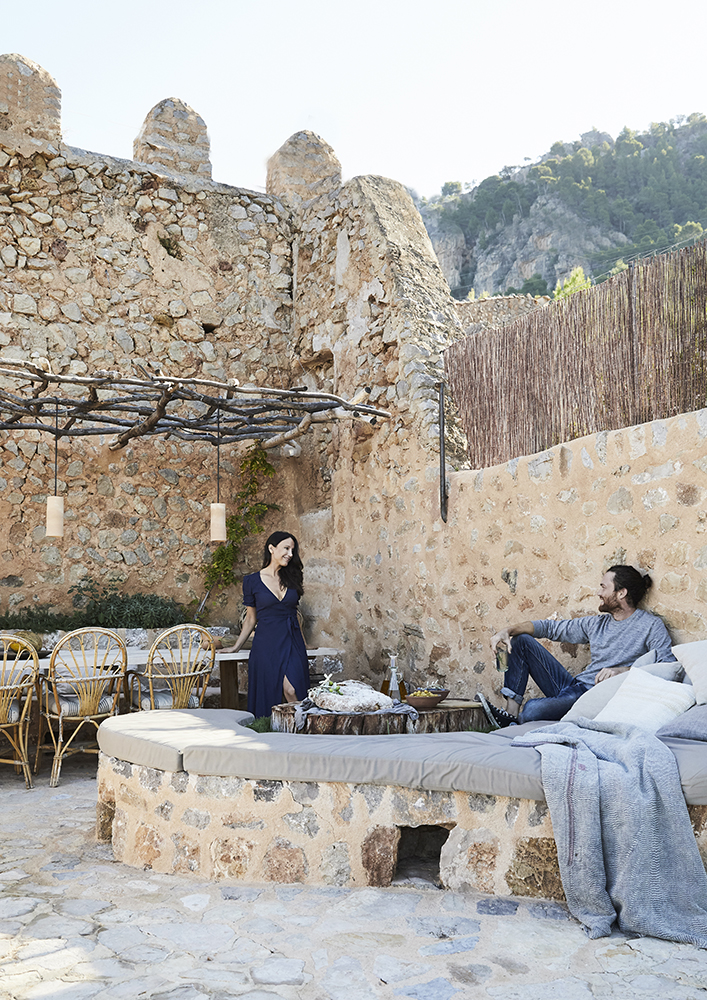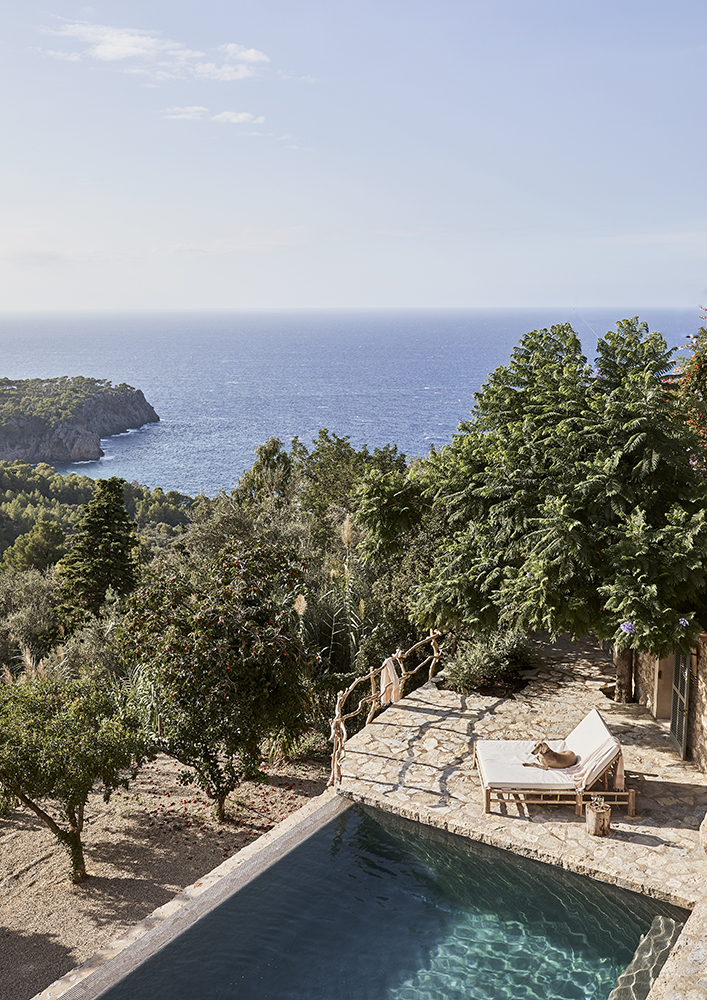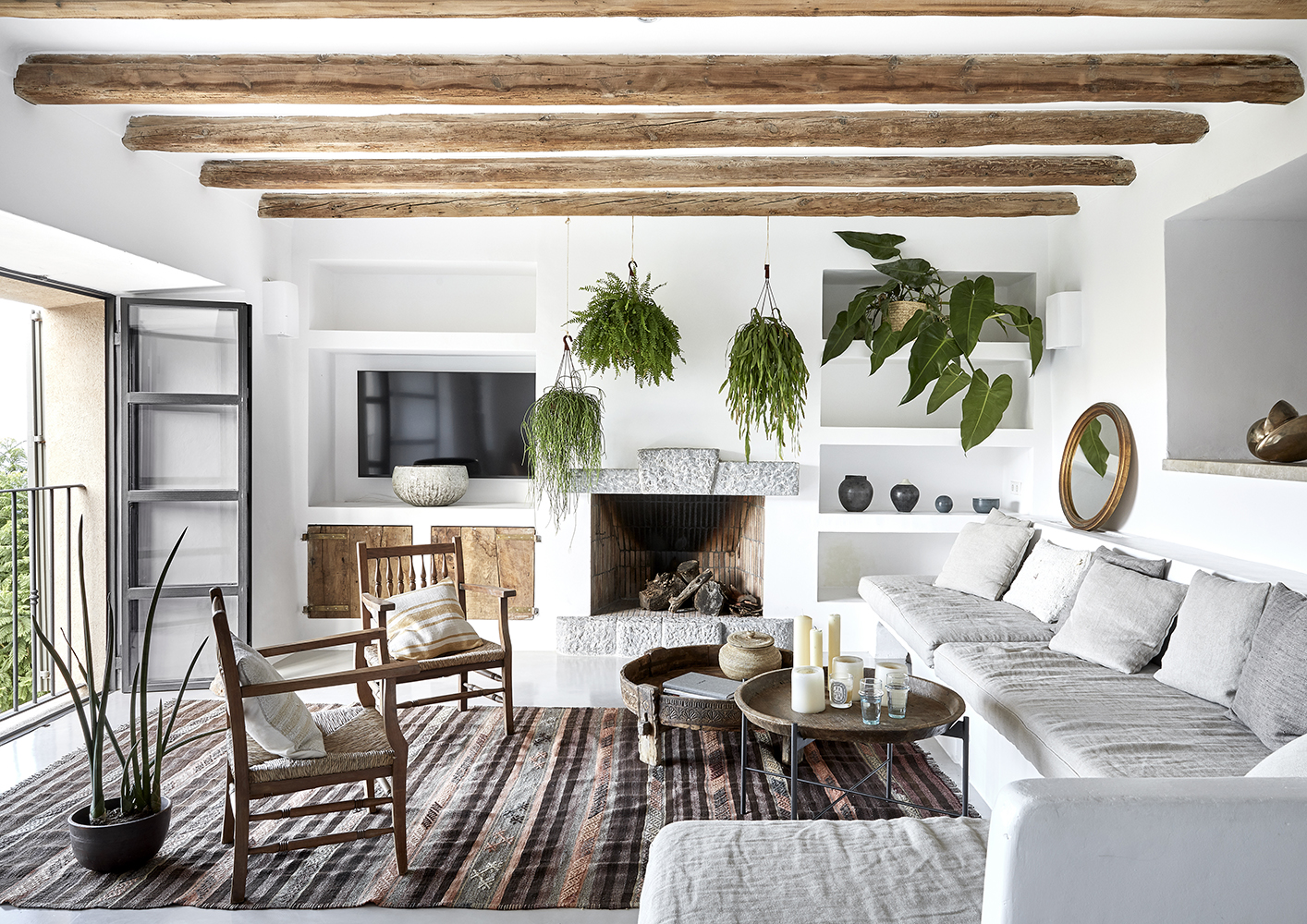Perched high on a terraced slope above the picturesque village of Deià on the Spanish island of Mallorca is a very special house with a venerable past – and a freshly rejuvenated present.
Situated a short distance from the centre of the charming village of Deià, Mallorca, this recently renovated house is jointly owned by several members of a large Nordic family. They use it on a regular basis as a getaway property, and when it was renovated for them recently by Deià-based design practice More Design, the team ‘had to make sure the house could accommodate multiple needs with people coming and going, while creating an intelligent yet simple and beautiful space,’ says designer Manuel Villanueva. ‘The family are design-savvy and were very much involved in the process,’ he says, ‘mixing their own aesthetic into our Mediterranean vision. The result blends a Nordic minimalism with Mallorcan accents.’

Villanueva explains that the group of properties that includes the house dates back to the 13th century, when Cistercian monks established a monastery in the area. As the monastic complex evolved, a watchtower was erected and additions were made until early in the 20th century, when two houses – including this one – were built on the south side of the property.


The house had had a previous final extension added to it in the 1970s, and the result was a rather ‘heartless, dull building’, which More Design proceeded to reorient and transform. A boutique firm, More Design specialises in renovations that retain and enhance all the heritage elements of traditional Mallorcan architecture while also bringing an easy-going and contemporary feel to every element of their designs.


Situated over three storeys on a steeply terraced site, the house is accessed via the middle floor, on which the kitchen, dining room, and a bedroom and bathroom are situated. The floor above houses the master bedroom and an en suite bathroom, as well as affording access to the spacious main outdoor terrace, and on the lower floor are two more bedrooms – including one with multiple built-in bunk beds for kids – and a shared bathroom.
While it is just a short drive from the centre of Deià, the house has a real feeling of being high on the hillside, and is connected in multiple ways to the landscape around it. Its narrow structure hugs the steeply terraced slope and from almost every room, there are spectacular views down the hill towards the village and the Mediterranean Sea below.

The arched front doorway – which has been carefully restored – was also the original entrance to the house and is probably the oldest part of it, says Villanueva. The heavy old wooden doors were carefully restored and a set of arched glass and metal doors added in front of them, both to add a measure of protection for the wood from the elements and to enable the homeowners to close only the glass doors if they prefer, which enables more light to enter the hallway area.
The hallway is large enough to accommodate an indoor seating and dining space (as well as the interior staircase that affords access to the upper and lower floors) and this area in turn leads through onto the spacious kitchen on the rear side of the house, and a compact yet beautifully inviting living room – which has windows onto those spectacular views – on the front side. Like much of the rest of the house, this floor features pale grey microcement floors as well as ceilings either made in the traditional Mallorcan arched style, or featuring classic wooden beams.

The materials used for the renovation are all part of an updated palette of the traditional materials used for building on Mallorca. This is a deliberate choice on More Design’s part – and is also an approach that is very much in line with the strict heritage guidelines that govern changes to existing traditional buildings on the island. As Villanueva’s fellow designer Oro Del Negro says, ‘Our first choice is to work with local resources and available materials.’
Local craftspeople create all of the key elements of More’s reworked interiors, from the sinuous metal balustrades – which were forged by local artisan Toni Calafell – to the handcrafted baths and basins made of local Binissalem stone by master craftsman Juan Camposol. In the kitchen, carpenters Bony Fuster and Pedro Casanovas made the reclaimed oak wooden cupboard doors, while stonemason Juan Camposol created the textured countertops from aged local stone.
To maximise the home’s relatively compact spaces, it was key to open all the spaces up to the exterior as much as possible. The kitchen, for example, has been linked to the living room – and the landscape beyond it at the front of the house – via a wide opening in one of the old walls. This creates a feeling of connection between the spaces as well as flooding the kitchen with additional light throughout the course of the day.


In addition, using built-in furniture elements made a lot of space-saving sense here, and built-in seating benches, couches and beds – the latter often with integrated storage drawers in their bases – are used throughout the house. The rest of the furniture and finishing touches are kept as simple as possible, with natural materials and textures (such as wood, ceramics, basketware and linen) predominating.
The overall feel of the interiors is lived-in yet pared back, and this marries perfectly with the updated-traditional architectural style of the structure itself. All in all, the carefully integrated combination of the traditional and the contemporary in this home makes it a house designed to facilitate getaways that calm the spirit and restore the soul.
Words: Noreen Johnson | Photographs: Greg Cox






